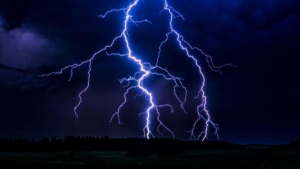 Be Lightning Ready: Essential Tips For
Be Lightning Ready: Essential Tips For
Keeping Your Family Safe In College Station’s Parks
Information courtesy of | City of College Station
Caution should always be at the forefront regarding the unpredictable nature of Texas storms, especially with lightning.
As you enjoy the great outdoors in College Station’s beautiful parks, always be vigilant and aware of weather conditions. Thankfully, our Earth Networks Outdoor Alert System can help.
The lightning detection system is installed at Bee Creek Park, Brian Bachmann Community Park, Stephen C. Beachy Central Park, Lick Creek Park, Veterans Park & Athletic Complex, Wayne Smith Ball Fields, and Wolf Pen Creek Park. The system’s lightning detection capabilities and timely notifications are essential in keeping park visitors informed and safe if hazardous weather approaches.
The system detects lightning strikes within a 10-mile radius and alerts park users with one 15-second horn blast and a continually flashing strobe, which means all activities should stop and you should seek shelter immediately.
The online system sets a 30-minute warning period after the first detection and resets to 30 minutes after each additional strike. When the system receives the all-clear, the horn issues three five-second blasts, and the flashing light stops.
Keep in mind that the system does not guarantee safe conditions. Data for lightning events at College Station parks equipped with the alert system is available at cstx.gov/lightning.
Participants and guests of our recreation facilities should closely monitor developing weather conditions. League officials, event managers, referees, and umpires monitor the weather and determine when to suspend activities. When officials are absent, coaches and parents decide the course of action.
We offer these lightning safety tips:
- Establish a chain of command that identifies who can remove individuals from the field.
- Designate a weather watcher to actively look for signs of threatening weather and notify the chain of command if a dangerous storm approaches.
- Monitor weather forecasts and warnings online or through local television and radio stations.
- If you see a lightning flash and hear thunder within 30 seconds or see a cloud-to-ground lightning bolt, the storm is close enough for lightning to threaten your location. Suspend play immediately and seek shelter.
- Enclosed buildings and automobiles are suggested shelters in parks. You are encouraged to leave the site if a safe structure is unavailable.
- Avoid being near the highest point in an open field or on open water. Don’t seek shelter near trees, flagpoles, or light poles.
A wise adage is, “If you can see it (lightning), flee it; if you can hear it (thunder), clear it.”
Awareness and preparation can help keep you and your family safe to play another day.